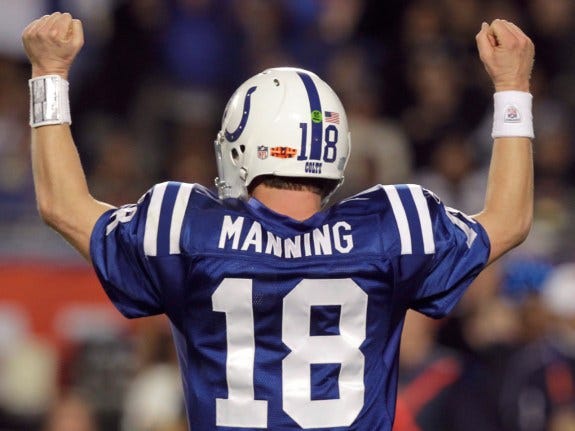Peyton Manning Had A Hall Of Fame Career. Then He Had Another One.

After a month of speculation that began almost immediately after the clock expired in his Denver Broncos’ Super Bowl victory over the Carolina Panthers, Peyton Manning has finally made it official: He’s retiring from football after 17 NFL seasons.
You don’t need fancy stats to tell you that Manning is one of the greatest quarterbacks in NFL history, if not the greatest. (Granted, we’ve used statistics to describe Manning’s impact a number of times over the years.) But they do help us put his accomplishments in perspective. Much like Jerry Rice, consensus G.O.A.T. among wide receivers, there are two (!) Hall of Fame careers lurking inside Manning’s résumé, according to a variant of Chase Stuart’s all-time QB ranking algorithm:1
Whether you break Manning’s career into two parts chronologically or based on even- and odd-numbered seasons, each half is of essentially the same quality as a Hall of Fame QB — like, say, Dan Fouts or Steve Young — by itself. Manning had more opportunities to throw the ball than just about anyone, ever, so he’s had an advantage in piling up value over replacement compared with quarterbacks of previous eras. But he also helped shape the NFL into the pass-heavy game it’s become, serving as the ultimate archetype of a modern field general.
The end of Manning’s career was ugly — both statistically and in terms of off-field allegations — even if he did cap it off with a Super Bowl title. But in terms of his on-field performance, few QBs could match even half of what Manning accomplished over his storied career.
Filed under: NFL
Setting each passer’s adjusted yards against the replacement level of a backup QB, the same baseline used by Football Outsiders in their Yards Above Replacement metric.





